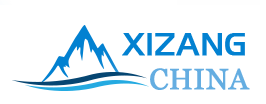Tibet's economic growth strong in 2021
Updated: 2022-01-06 (chinadaily.com.cn)  Print
Print 



A Fuxing bullet train runs on the Lhasa-Nyingchi railway in the Tibet autonomous region on June 24, 2021. [Photo by Jiao Hongtao/For China Daily]
The Tibet autonomous region saw steady economic growth in 2021, with GDP reaching 200 billion yuan ($32 billion) — an increase of about 7 percent — Yan Jinhai, chairman of the regional government, said on Tuesday in the government work report delivered at the fifth session of the region's 11th People's Congress.
Over the past year, the per capita disposable income of urban and rural residents increased by 13 and 14 percent, respectively, ranking first in China's western regions, Yan said
The region's added value of industries above a designated size increased by more than 11 percent in 2021, while the retail sales of consumer goods rose by 10 percent.
"The region's economic development maintained good momentum in 2021. It did not report any cases of COVID-19, and the operation of the market was stable and orderly," Yan said.
With infrastructure upgrades, a highway between the region's capital, Lhasa, and the city of Nagchu in the north was opened. Townships and villages accessible by road reached virtually 100 percent in those places, with highway mileage exceeding 120,000 kilometers as of the end of 2021.
The Lhasa-Nyingchi Railway started up last year, linking Lhasa with Nyingchi and Lhokha and bringing the Fuxing bullet train series to the plateau region for the first time.
For 2022, Yan said, the region expects to see GDP growth of 8 percent, as well as per capita growth in disposable income above 8 percent for urban residents and above 10 percent for rural residents.
"We will continue work hard to keep the region's economic development progress within a reasonable range," Yan said. "We will maintain a stable and healthy economic environment."








